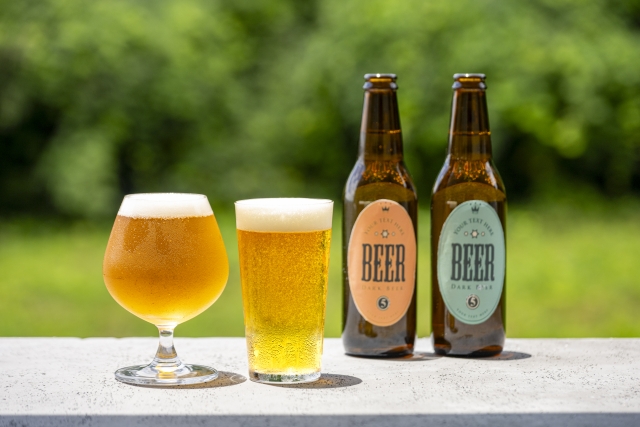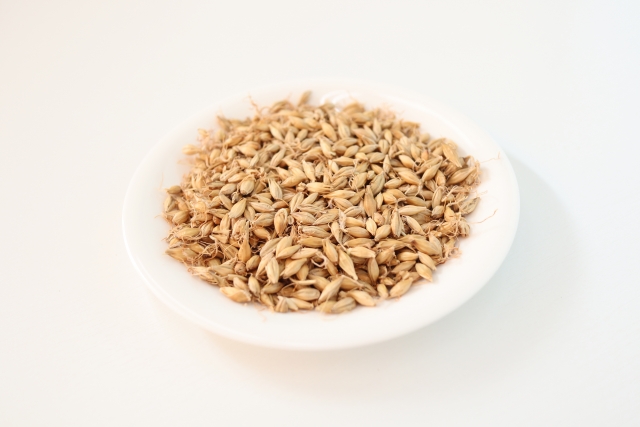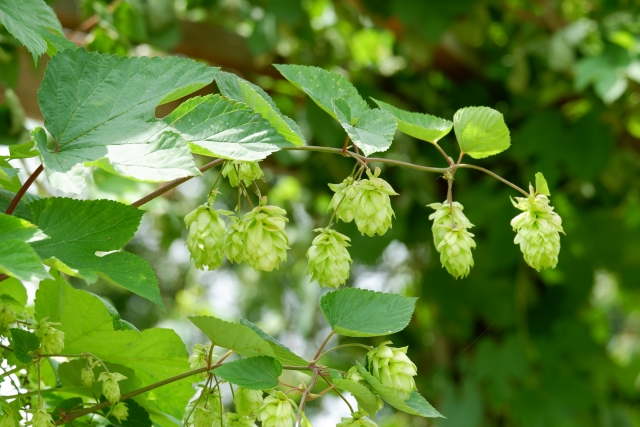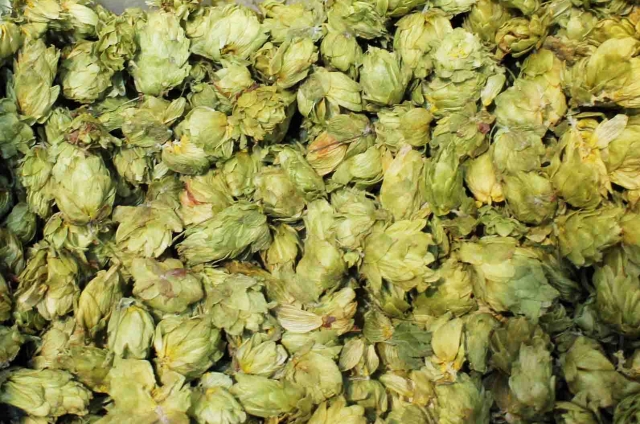 Yoko, a European beer lover
Yoko, a European beer loverI'll ask again,What is beer anyway?
I hear they use wheat,How is it different from other alcoholic drinks?
We will answer these questions.
- Definition of beer
- Differences from other alcoholic drinks
- Basics of ingredients and brewing methods used in beer
When you hear the word "beer," what comes to your mind? Many people have had beer before, but"What is beer anyway?"When asked this question, you may find it difficult to answer.
In this article,Basic definition and characteristics of beerI will explain in detail about these points. After reading this, you will feel much closer to beer.
- The credibility of this article


当ブログの筆者はヨーロッパ在住、海外歴5年超。中東での“禁ビール生活”を経て出会った本場の一杯に心を奪われ、気づけば1,000本以上の現地ビールを飲んできました。
元法人営業の情報収集力と、3つのブログ・SNS運営で培った発信力を活かし、「ただの酒好きでは終わらない本気のビール愛」でリアルな情報をお届けします。
I hope you will take the time to look at it🙇♀️
Definition of beer


Beer isMalt (germinated barley) is the main ingredientAs, thisHops, water and yeastIt is an alcoholic beverage that is fermented with
The carbon dioxide produced during the fermentation process and the bitterness of hops give beer its unique refreshing taste.
The definition of beer varies from country to country, but the following basic criteria are commonly found:
- Contains malt as an ingredient
In many countries, malt must be the main ingredient of beer.
For example, Germany's "Beer Purity Law" requires that beer be made using only malt, hops, water, and yeast. - Alcohol content
It is generally defined as a beverage that contains alcohol, with an alcohol content typically ranging from 3 to 121 TP3T. - Other Ingredients
In some countries, beer with added fruit, spices, sugar, etc. is also permitted.
This has led to a wider range of beer styles, including fruit and spiced beers.
Differences from other alcoholic drinks


Unlike whiskey and shochu, beerFermented alcoholIt is a type of.
What is fermented alcohol?"Alcohol in which sugar has been converted into alcohol and carbon dioxide by the action of microorganisms".
Specifically, it refers to a beverage made by fermenting sugar with yeast or bacteria to produce alcohol, creating a unique flavor and aroma in the process.
Typical fermented alcoholic drinks include beer, wine, and sake.
Wine is made by fermenting fruit sugars, but beer isMalt starchIt is made by converting it into sugar and fermenting it.
Also, like beer, whiskey is made from barley, but it has a higher alcohol content because it goes through a distillation process.
Since beer is produced by fermentation, its alcohol content is generally around 3-8%.
The main ingredients used in beer


Beer has four main ingredients:
①Malt
Mainly germinated barley.
②hop
A plant that gives beer its bitterness and aroma.
③water
It makes up the majority of the beer and greatly influences its taste.
④yeast
A microorganism that ferments to convert sugars into alcohol and carbon dioxide.
We'll explain this in more detail below.
① Malt
It is the base ingredient of beer and is mainly made by drying germinated barley.
Barley is well suited to the flavor and texture of beer and is the most common primary ingredient in beer.
This becomes sugar, which is converted into alcohol during the fermentation process.




② Hops
A plant that gives beer its unique bitterness and aroma.
Hops also act as a preservative, helping to extend the shelf life of beer.




Hops are mainlyCool areas of the Northern HemisphereIt is cultivated in.
Specifically, the main producing areas are the following countries and regions:
- America
The Yakima Valley in Washington State is particularly famous. The United States is one of the world's largest producers of hops, and cultivates many unique varieties. - Germany
Germany is one of the world's leading hop-producing countries, with Hallertau in Bavaria being the most famous. Germany has also long been known as the home of beer. - Czech Republic
The region of Saaz in particular is famous for its aromatic hops. - England
Kent is famous for its hop production, with varieties used in traditional ale beer being grown there.
Hops are also grown in New Zealand, Australia, Poland and other countries, producing varieties with unique flavors.
Hops are also grown in Japan, especiallyHokkaidois the main hop producing region in Japan.
The cool climate is ideal for growing hops.
In HokkaidoKamifurano TownorNiseko Townare famous for hop cultivation.
Japanese hops are used by some major beer companies and craft beer makers, and there are also beers made with hops grown in Japan.
In recent years, craft beer has become increasingly popular both at home and abroad, and the quality of Japanese hops is also attracting attention.
③ Water
About 90% of beer is water.
The hardness and composition of water greatly affect the taste of beer.
If you are particular about water as an ingredient in beer, pay attention to the following points.
- Water hardness (mineral content)
The hardness of the water isCalcium and magnesiumIt is determined by the amount of.
Hard water (water with a high mineral content) gives beer a sharper flavor, while soft water (water with fewer minerals) gives it a mellower, clearer flavor.
For example, in the UKBus Regionis rich in hard water, which is good for bitter ales.
Also, GermanyMunichMost of the water in Japan is medium-hard, which is suitable for mellow lager beer. - Water pH
The pH value of water affects the saccharification of malt and the fermentation of yeast.
If it is too acidic or too alkaline, the fermentation balance will be thrown off and the flavor of the beer will change.
So brewers choose water with the right pH, usually neutral or slightly acidic. - Water purification
Nowadays, many breweriesWater purification technologyWe use a wide range of methods to remove unwanted impurities and chlorine, resulting in purer water.
This preserves the original flavor of the beer and allows us to brew beer of consistent quality. - Water quality adjustment
Depending on the brewery,Add or adjust mineralsThis can also help create ideal water quality.
It is also common to artificially adjust the minerals and pH of water to recreate a particular style.
Many breweries place great importance on choosing their water, as the quality of the water can greatly affect the flavor and taste of the beer.
④ Yeast
The microorganism that causes fermentation in beer, converting sugar into alcohol.
Another feature is that different yeasts are used depending on the type of beer.
The type of yeast used in beer has a significant impact on the taste and style of the beer.
mainlyTop-fermenting yeastandBottom fermenting yeastThere are two types, each with different characteristics.
Top-fermenting yeast (ale yeast)
- Fermentation temperatureFermentation takes place at relatively high temperatures of 15 to 25°C.
- Location of yeastIt is called "top-fermenting" because the yeast rises to the top of the liquid during fermentation.
- FeaturesAles, porters, stouts, etc.Fruity and complex aromaThere are many beers that have this feature.
You may notice flavors of banana, apple, nuts, and cloves, making it a rich flavor. - example イギリスのエールビール、ベルギーのTrappist beerなど。
Bottom fermenting yeast (lager yeast)
- Fermentation temperatureFermentation takes place at low temperatures between 7 and 13°C.
- Location of yeastIt is called "bottom fermentation" because the yeast sinks to the bottom of the liquid during fermentation.
- FeaturesLike lager beer,Clean and crisp tasteIt is characterized by:
The bitterness of the hops and the flavor of the barley are more clearly apparent, and the aroma is subdued.
It is aged for a long period at cool temperatures, resulting in a refreshing beer. - exampleGerman pilsner, American lager, regular Japanese beer, etc.
bonus: Natural fermentation yeast (wild yeast)There is also.
- Fermentation MethodIt is fermented by wild yeasts and microorganisms that only grow in certain regions.
The most common method is to place the beer brewing liquid (wort) in an open container, let it cool, and then capture the yeast that naturally jumps in to ferment it. - FeaturesNaturally fermented beer is characterized by its strong sourness and complex, unique flavor.
It has a fruity, sour, dry taste, and sometimes a slight bitterness or carbonation.
Sometimes they can have aromas of cheese or leather, and many of these beers are very unique. - exampleBelgian Lambic
How beer is made


The process of making beer is simple, but requires precise technique.
The main flow is as follows.
First, malt is heated with water to convert the starch into sugar.
This process is called "glycation."
Next, hops are added, giving beer its characteristic bitterness and aroma.
During this process, the liquid becomes what is called "wort."
Yeast is added to the wort and fermented.
Alcohol is produced during this process.
After fermentation is complete, the beer is aged for a period of time and then filtered to remove impurities.
This is where the beer takes on a clear appearance and becomes easy to drink.
Finally, it is bottled or canned and shipped.
Many beers are also bottled in barrels, allowing you to enjoy them even fresher, especially craft and draft beers.
summary
By learning about the definition of beer and its production process, you may now have a deeper understanding of how the beer you drink every day is made and how it differs from other alcoholic beverages.
Next time you have a beer, keep this article in mind.
Beer is not just an alcoholic drink, it is a wonderful drink packed with history, culture and production techniques.
Please enjoy the different kinds of beer!

